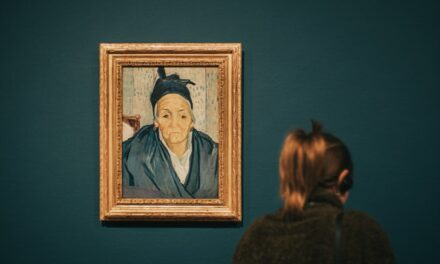The life of the Dutch painter, known for his dramatic use of light and shadow, began in the bustling city of Utrecht in 1599. Born into a family of modest means, he was the son of a cloth merchant. His early exposure to the vibrant art scene of Utrecht, a city that was rapidly becoming a cultural hub, would prove pivotal in shaping his artistic journey.
At a young age, he displayed a keen interest in art, which led him to apprentice under the renowned painter, Abraham Bloemaert. This apprenticeship provided him with a solid foundation in the techniques of painting, particularly in the areas of composition and colour theory. During his formative years, he was also influenced by the works of Caravaggio, whose dramatic realism and innovative use of chiaroscuro would leave an indelible mark on his style.
The artist’s education was not limited to formal training; he was also an avid observer of the world around him. The streets of Utrecht, filled with merchants, artisans, and the everyday life of its citizens, served as a rich source of inspiration. This combination of formal education and real-world observation would later inform his unique approach to painting, allowing him to capture both the divine and the mundane with equal fervour.
Summary
- Caravaggio’s early life and education in Milan greatly influenced his artistic style
- His use of chiaroscuro and dramatic lighting was influenced by his time in Rome and exposure to Caravaggio’s work
- Caravaggio’s rise to prominence was marked by his controversial and unconventional artistic style
- The Utrecht Caravaggisti were a group of Dutch artists heavily influenced by Caravaggio’s work
- Caravaggio’s religious and mythological themes were often controversial and challenged traditional artistic conventions
Style and Influences
His artistic style is often characterised by a striking interplay of light and shadow, a technique known as chiaroscuro. This method not only adds depth to his compositions but also imbues them with a sense of drama and emotion. Influenced heavily by Caravaggio, he adopted the Italian master’s penchant for realism and psychological intensity.
However, he also infused his works with a distinctly Dutch sensibility, focusing on the everyday lives of ordinary people rather than solely on religious or mythological subjects. In addition to Caravaggio, he drew inspiration from other artists of the Northern Renaissance, such as Pieter de Hooch and Rembrandt. The meticulous attention to detail found in their works resonated with him, prompting him to explore themes of domesticity and intimacy.
His ability to blend these influences resulted in a style that was both innovative and deeply rooted in the traditions of Dutch painting. The emotional resonance in his works often reflects the human condition, making them relatable to viewers across generations.
Rise to Prominence
His rise to prominence in the art world can be traced back to his early successes in Utrecht, where he quickly gained recognition for his unique style. By the 1620s, he had established himself as one of the leading painters in the city, attracting a loyal clientele that included both local patrons and wealthy merchants. His ability to capture the essence of his subjects with remarkable precision set him apart from his contemporaries, leading to an increasing demand for his work.
As his reputation grew, so did his ambition. He began to experiment with larger compositions and more complex narratives, often incorporating multiple figures into his scenes. This evolution in his work coincided with a broader trend in Dutch art during the Baroque period, where artists sought to convey more dynamic and engaging stories through their paintings.
His innovative approach not only solidified his status as a prominent artist but also paved the way for future generations of painters who would follow in his footsteps.
The Utrecht Caravaggisti
The Utrecht Caravaggisti were a group of artists who were profoundly influenced by Caravaggio’s style and techniques. Among them, he emerged as one of the most significant figures, helping to establish a distinct school of painting that combined Italian influences with Dutch sensibilities. This group was characterised by their shared commitment to realism and their dramatic use of light and shadow, which became hallmarks of their work.
The Utrecht Caravaggisti were not merely imitators; they adapted Caravaggio’s techniques to reflect their own cultural context. They often depicted scenes from everyday life infused with moral or religious undertones, creating a unique blend that resonated with Dutch audiences. His contributions to this movement were instrumental in shaping its direction, as he introduced new themes and subjects that expanded the scope of what could be portrayed in art.
The legacy of the Utrecht Caravaggisti continues to be felt today, as their innovative approaches laid the groundwork for future developments in Baroque art.
Patronage and Commissions
Throughout his career, he enjoyed considerable patronage from both religious institutions and private collectors. His ability to create compelling narratives through his paintings made him a sought-after artist for altarpieces and other religious commissions. Churches and convents across Utrecht commissioned works that not only served as spiritual focal points but also showcased the artist’s remarkable skill.
In addition to religious commissions, he also received numerous requests from wealthy patrons who sought to adorn their homes with his art. These private commissions allowed him greater creative freedom, enabling him to explore themes beyond the strictly religious. His portraits and genre scenes captured the essence of contemporary life in the Netherlands, reflecting both the aspirations and realities of his patrons.
This duality in his work—balancing sacred themes with secular interests—demonstrated his versatility as an artist and contributed significantly to his enduring legacy.
Religious and Mythological Themes
Religious themes played a central role in his oeuvre, reflecting the spiritual climate of 17th-century Holland. His paintings often depicted biblical narratives with a focus on human emotion and experience. Unlike many of his contemporaries who approached religious subjects with idealised forms and distant expressions, he infused his figures with palpable emotion, inviting viewers to engage with the divine on a personal level.
In addition to religious subjects, he also explored mythological themes that allowed him to delve into classical narratives while maintaining a connection to contemporary life. His ability to reinterpret these ancient stories through a modern lens made them accessible to his audience. By blending elements of mythology with everyday experiences, he created works that resonated deeply with viewers, bridging the gap between past and present.
Influence on Baroque Art
His impact on Baroque art cannot be overstated; he played a crucial role in shaping the direction of this dynamic movement within Dutch painting. His innovative use of chiaroscuro not only influenced his contemporaries but also set a precedent for future artists who sought to convey drama and emotion through light and shadow. The theatrical quality of his compositions became a defining characteristic of Baroque art, inspiring countless painters across Europe.
Moreover, his focus on realism and psychological depth paved the way for subsequent generations to explore similar themes in their work. Artists such as Rembrandt and Vermeer drew upon his techniques while developing their own distinctive styles. The legacy of his contributions can be seen in the evolution of Baroque art as it moved towards greater emotional intensity and narrative complexity.
Later Life and Legacy
In the latter part of his life, he continued to produce remarkable works that reflected both personal growth and artistic maturity. Despite facing challenges such as fluctuating patronage and changing artistic tastes, he remained committed to his craft. His later works often exhibit a deeper understanding of human emotion and experience, showcasing an evolution in both technique and subject matter.
His legacy is profound; he is remembered not only as a master painter but also as a pivotal figure in the development of Dutch art during the Golden Age. His influence extended beyond his lifetime, inspiring future generations of artists who sought to capture the complexities of human experience through their work. Today, his paintings are celebrated for their emotional depth and technical brilliance, securing his place among the great masters of art history.
Notable Works
Among his most notable works are “The Calling of Saint Matthew,” “The Supper at Emmaus,” and “The Procuress.” Each piece exemplifies his mastery of chiaroscuro and narrative composition while showcasing his ability to convey complex emotions through facial expressions and body language. “The Calling of Saint Matthew,” for instance, captures a moment of divine intervention with remarkable intensity, drawing viewers into the scene. Another significant work is “The Supper at Emmaus,” where he masterfully depicts the moment when Christ reveals himself to two disciples after his resurrection.
The interplay of light and shadow creates a sense of immediacy and drama that is characteristic of his style. These works not only highlight his technical prowess but also reflect his deep engagement with themes of faith and humanity.
The Use of Chiaroscuro
Chiaroscuro is perhaps one of the most defining features of his artistic style. This technique involves the use of strong contrasts between light and dark to create a sense of volume and depth within a composition. He employed chiaroscuro not merely as a stylistic choice but as a means to enhance emotional expression within his works.
By manipulating light in such dramatic ways, he was able to guide viewers’ attention towards specific elements within his paintings, creating focal points that draw the eye. This technique also allowed him to convey mood—whether it be serenity or tension—effectively immersing viewers in the narrative he sought to portray. His innovative approach to chiaroscuro has had lasting implications for artists across various genres.
Impact on Dutch Golden Age Art
His contributions significantly shaped the trajectory of Dutch Golden Age art, influencing not only his contemporaries but also future generations.
His ability to blend religious narratives with everyday life resonated deeply within Dutch society, reflecting its values and aspirations.
Moreover, his role as a mentor to younger artists helped disseminate these ideas further throughout the artistic community in Utrecht and beyond.
As such, he remains an essential figure in understanding both the evolution of Baroque art and its enduring legacy within Western art history.
For those interested in exploring different artistic techniques, a fascinating article on combining watercolor with ink provides valuable insights and tips. This article delves into the creative process of mixing these two mediums to create unique and visually striking artworks. It offers a fresh perspective on traditional painting methods and encourages artists to experiment with new approaches. This resource is a must-read for anyone looking to expand their artistic horizons and push the boundaries of their creativity.



